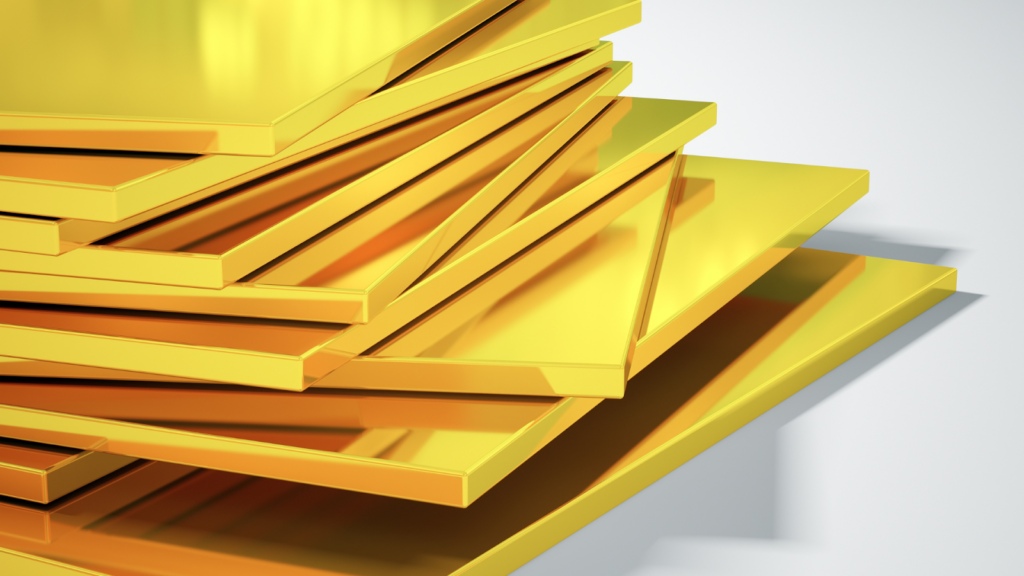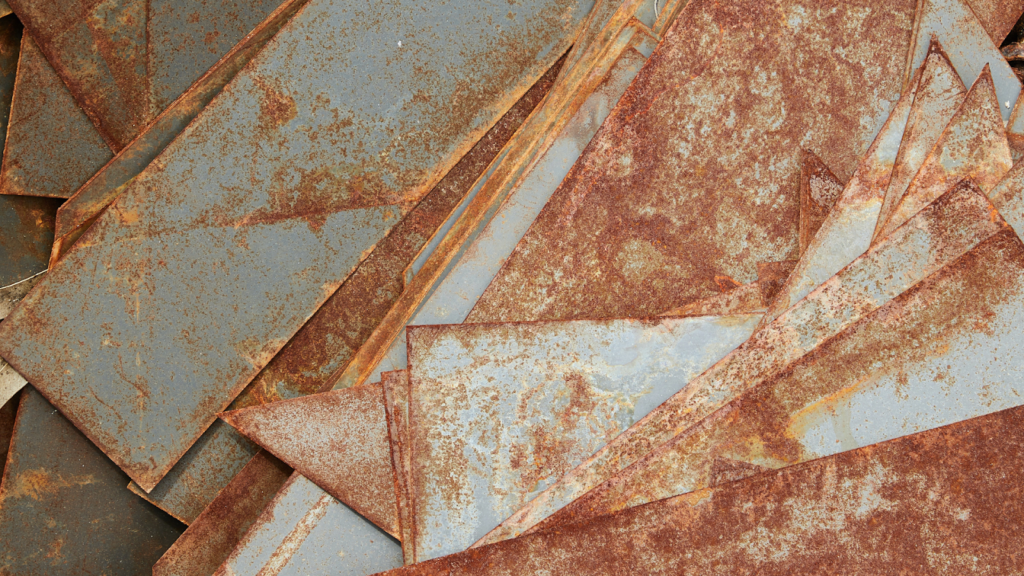The aerospace industry is constantly looking for ways to improve the performance and reliability of their products. Gold plating is one of the most versatile and reliable processes used in the aerospace industry to provide superior protection and performance for components. Not only does it offer superior conductivity, durability, and compatibility with other materials, but it also provides a highly attractive finish that can enhance the aesthetic appeal of the product.
In this article, we will explore the benefits of gold plating for aerospace applications, the types of gold plating specifications, and the environmental impact of gold plating. We will also discuss the importance of choosing the right provider for gold plating for aerospace. By the end of this article, you will have a better understanding of the advantages of gold plating and the best practices for gold plating for aerospace.
Ready to take your aerospace components to the next level with top-notch gold plating services? Look no further than Valence! As the world’s largest independent aerospace surface finishing company, we specialize in providing high-quality gold plating solutions for the aerospace industry. We can work with you to provide custom gold plating services that will improve the quality of your products and add value to your manufacturing operation.
Request a free quote or reach out to us today for a comprehensive consultation on how our gold plating services can benefit your aerospace components!
What Is Gold Plating?
Gold plating is a process in which a thin layer of gold is applied to the surface of a metal or other material.(1)
This thin layer of gold is usually 0.25 to 2.5 microns thick and is applied using a chemical process called electroplating. It is used to improve the appearance and durability of metals and other materials and also prevent corrosion.
Thanks to these properties, gold plating is widely utilized in various industries, including aviation, defense, medical/life sciences, and space and communication systems.
How Is Gold Plating Used For Aerospace?
Gold plating is extensively utilized in the aerospace industry for various applications. Its exceptional properties, including excellent conductivity, corrosion resistance, and biocompatibility, make it an ideal choice for critical aerospace components. Gold-plated connectors and contacts are widely used in electrical and electronic systems, ensuring reliable signal transmission and preventing oxidation or degradation.
Additionally, gold plating is employed on certain surfaces to provide a protective barrier against the harsh environment of space, protecting sensitive equipment from radiation and thermal fluctuations.
Furthermore, gold’s high reflectivity makes it valuable for coating spacecraft components, such as thermal control surfaces and mirrors, enhancing heat management and optical performance.
Aerospace Gold Plating Benefits
Gold plating has a wide range of benefits for aerospace applications. Let’s explore some of these benefits:
Durability And Longevity
Durability and longevity are key advantages of gold plating in aerospace applications. The inherent corrosion resistance of gold ensures that components remain protected from the harsh conditions encountered in the aerospace environment. This protective layer enhances the lifespan of critical parts, reducing the need for frequent replacements and minimizing downtime for maintenance.
Corrosion Resistance And Conductivity
Gold’s resistance to corrosion ensures that components are shielded against the corrosive effects of moisture, chemicals, and other environmental factors. This property is particularly valuable in aerospace, where exposure to extreme temperatures and harsh conditions is common.
Additionally, gold is an excellent conductor of electricity, making it ideal for applications that require reliable electrical conductivity, such as in electronic components and connectors.
The combination of corrosion resistance and conductivity provided by gold plating contributes to the overall performance and reliability of aerospace systems.
Compatibility With Other Materials
Gold has excellent compatibility with various substrates and alloys, allowing it to be seamlessly integrated into complex aerospace systems. This compatibility ensures proper bonding, prevents galvanic corrosion and promotes efficient electrical connections between different components.
It also enables gold-plated parts to withstand thermal cycling and mechanical stress, enhancing the overall durability and functionality of aerospace equipment.
Aesthetic Appeal
The attractive, eye-catching finish of gold plating adds aesthetic appeal to aerospace components. This is especially important for applications that involve customer-facing or public-facing areas, such as cabin interiors or exterior aircraft design.
The luxurious and visually pleasing appearance of gold plating can enhance the overall perception of quality and sophistication. It can also be used for decorative purposes, allowing aerospace manufacturers to incorporate branding elements or design accents that align with their identity.
Types Of Gold Plating Specification
When selecting gold plating for aerospace applications, it is important to consider the required specification type.
The most common aerospace gold plating specifications include MIL-DTL-45204, ASTM B488, and AMS 2422.
MIL-DTL-45204
MIL-DTL-45204 is a specification for gold plating used in aerospace applications. It is designed to provide superior performance in a variety of conditions, including extreme temperatures, corrosive environments, and high wear and tear. This specification is approved for use in a variety of aerospace applications, including aircraft, spacecraft, and missiles.
This specification categorizes different types of gold: A minimum of 99.7 percent gold is present in Type I, 99.0 percent in Type II, and 99.9 percent in Type III.
The Knoop scale also has four hardness grades: Grade A (90 maximum), Grade B (91–129), Grade C (139–200), and Grade D. (201 and over).
ASTM B488
ASTM B488 specifies the requirements for gold plating thickness and purity, as well as the types of gold plating processes that may be used. The gold plating must meet the requirements of the standard to be considered suitable for use in engineering applications.
This standard also outlines the requirements for substrate preparation and post-plating treatments, such as heat treatment and passivation.
AMS 2422
AMS 2422 is a gold plating specification used for aerospace applications. It is a popular choice for its superior performance and long-term durability. This specification is designed to provide a high-quality finish resistant to corrosion and wear.
The gold plating is applied in a thin layer, usually between 0.0001 and 0.0005 inches thick. This thin layer is enough to provide excellent conductivity and corrosion resistance. It is also highly compatible with other metals and materials, making it an ideal choice for aerospace applications.
This specification also includes a number of quality control checks, ensuring that the gold plating meets all the necessary requirements. This includes tests for adhesion, corrosion resistance, and thickness.
By adhering to the AMS 2422 specification, aerospace companies can be sure that their gold plating will provide the performance and longevity they need.
Request a free quote on gold plating for your aerospace components, or contact us today for more information!
The Environmental Impact Of Gold Plating In Aerospace
Gold plating is often used in aerospace applications for its exceptional conductivity and corrosion resistance.
However, the process of gold plating involves the use of toxic chemicals and generates hazardous waste. These chemicals, such as cyanide-based solutions, pose risks to both human health and the environment if not properly handled and disposed of.(2)
Additionally, gold is a precious and finite resource, and its extraction contributes to habitat destruction, water pollution, and greenhouse gas emissions.
Choosing Right Provider For Gold Plating For Aerospace
When it comes to choosing the right provider for gold plating for aerospace applications, there are a few key factors to consider:
- Expertise And Experience
The aerospace industry has unique requirements and standards, so working with a provider who understands these intricacies is essential for successful plating.
- Reliability And Quality
Look for a provider with a proven track record of consistently delivering high-quality gold plating services. They should have stringent quality control measures to ensure that the plated components meet or exceed industry standards.
- Capacity And Turnaround Time
Aerospace projects often have strict deadlines, so it is important to choose a provider who can handle the volume of work required and deliver within the required timeframes.
- Compliance
The provider should have a comprehensive understanding of the regulatory and compliance requirements specific to the aerospace industry. This includes knowledge of relevant specifications and certifications, such as AS9100D or Nadcap, to ensure compliance with industry standards.
Luckily, you don’t have to waste time and resources looking for the right provider because Valence ticks all the boxes! As the world’s largest independent aerospace surface finishing company, we possess the expertise and experience necessary for gold plating in aerospace applications.
Our proven track record of delivering high-quality services and stringent quality control measures guarantee reliability and top-notch results. Plus, with our substantial capacity and commitment to meeting deadlines, we ensure efficient turnaround times for your aerospace projects.
We are also well-versed in the regulatory and compliance requirements specific to the industry, including certifications like AS9100D or Nadcap.
By choosing us, you can have confidence in our ability to provide exceptional gold plating services for aerospace, ensuring adherence to industry standards and a successful collaboration process.
Just request a free quote or contact us today to get started on your gold plating project!
Explore The Exciting Benefits Of Gold Plating In Aerospace!
As technological advancements continue to push the boundaries of aerospace innovation, the significance of gold plating in this industry cannot be overstated. The remarkable properties of gold, such as its exceptional conductivity, corrosion resistance, and biocompatibility,(3) make it an invaluable asset in various aerospace applications.
From enhancing the performance of electronic components to ensuring reliable communication systems and protecting critical surfaces, gold plating plays a crucial role in the success and safety of aerospace missions. As we look toward the future of aerospace exploration and development, it is clear that those who embrace and harness the advantages of gold plating will soar ahead.
So don’t be left behind in this exciting journey of technological progress; request a free quote or reach out to us today for a consultation on how gold plating can revolutionize your aerospace projects. Our team of experts is ready to guide you through the process, from selecting the appropriate gold plating techniques to implementing them effectively. Embrace the power of gold plating and unlock a world of possibilities in aerospace innovation!
Want to learn more about gold plating? Check out:
- A Gold Standard Of Quality: An Overview Of Gold Plating Services For Aerospace
- How Much Gold Foil Is Used On Satellites? Gold Plating In Aerospace
- How Gold Is Used In Aerospace: Gold Plating In Satellites
FAQs
Is gold plating expensive?
Gold plating is not necessarily expensive. It is a cost-effective solution for many aerospace applications and can be tailored to fit any budget. The cost of gold plating depends on the type of gold plating, the size of the item being plated, and the complexity of the job.
What method does Valence Surface Technologies use for gold plating for aerospace?
We employ three types of gold plating baths to meet our customers’ requirements. These baths consist of 99.9% gold deposits with a maximum Knoop hardness of 90, 99.7% gold deposits with a Knoop hardness ranging from 130 to 200, and 99.0% gold deposits with a minimum Knoop hardness of 201. These options allow us to provide the desired level of hardness for various aerospace components and ensure superior performance.
What is high-quality gold plating?
High-quality gold plating refers to a process that achieves excellent results in terms of durability, appearance, and performance.
Why is gold used to prevent corrosion?
Gold is one of the most corrosion-resistant metals available. The gold layer acts as a barrier to protect the underlying metal from the environment.
Can gold plating be used on any type of material in aerospace applications?
Yes, gold plating can be used on a wide range of materials in aerospace applications. It is commonly applied to metals such as nickel, brass, silver, copper, and even stainless steel.(1)
Sources:
- Gold plating. Gold Plating – an overview | ScienceDirect Topics. (n.d.). https://www.sciencedirect.com/topics/chemical-engineering/gold-plating
- National Center for Biotechnology Information. (n.d.-c). https://www.ncbi.nlm.nih.gov/books/NBK507796/
- Introduction to the physical and chemical properties of gold. (n.d.-c). https://www.researchgate.net/publication/290853737_Introduction_to_the_Physical_and_Chemical_Properties_of_Gold.

